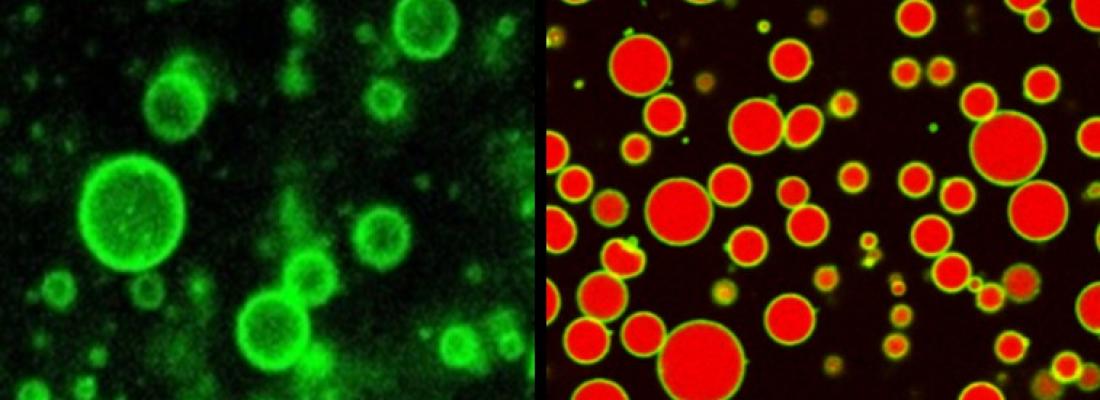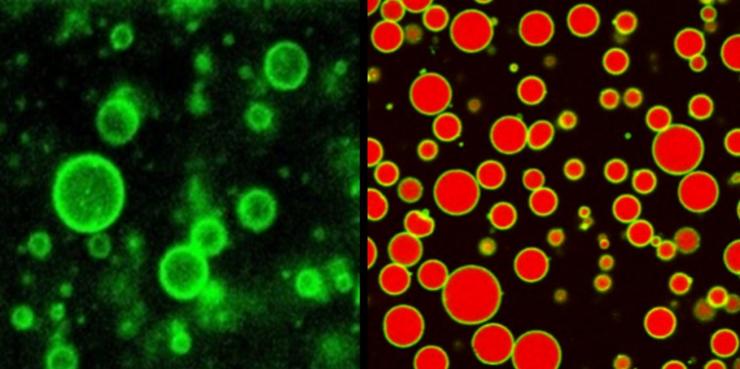Food, Global Health Reading time 2 min
A new technique to encapsulate biomolecules
Published on 25 June 2018

The formulation of compartments (or capsules) that can encapsulate biological materials (proteins, enzymes, DNA, etc.) is of considerable interest not only from an industrial point of view but fundamentally regarding the development of artificial cells. The best known compartments, liposomes, form from lipids and are notably used for cosmetic purposes. Other compartments are based on ‘colloidal’1particles, and are thus called ‘colloidosomes’.
Until now, these colloidosomes were produced by adding particles (such as latex or silica, etc.) to oil/water emulsions to form so-called ‘Pickering’ emulsions (from the name of the British scientist who discovered this phenomenon in the early 20th century). These particles are then linked chemically to form robust capsules that can be transferred to water. However, use of the solvents and oil necessary for their manufacture constitutes an obstacle to their development, because the active substances need to be added at the start of manufacture and may therefore be destroyed by the solvents.
A new oil- and solvent-free system
For the first time, scientists from INRA, CNRS and Université de Bordeaux, working in collaboration with a team from University of Bristol (UK) have developed a novel method to produce these colloidosomes directly in water using neither solvent nor oil. Their approach is based on so-called ‘water-in-water’ emulsions that form notably in mixtures of ‘incompatible’ polymers. In this system, polymer-enriched droplets are dispersed in a medium enriched in another polymer. The scientists were able to show that latex particles moved to the interface between droplets and thus formed water-in-water Pickering emulsions. They then succeeded in gelling the interior of these droplets, thus forming colloidosomes directly in the aqueous phase. The advantage of these systems is that they are known to spontaneously ‘sequestrate’ biological material and active substances within the droplets. The scientists thus revealed that these colloidosomes could indeed spontaneously sequestrate fluorescent entities. Their findings open the way towards future studies on the encapsulation of biological materials and active substances in new types of capsules. In the years to come, these results may enable the development of colloidosome-type capsules in the context of creating artificial cells.

1 Small particles in suspension in a liquid.
Preparation of swellable hydrogel-containing colloidosomes from aqueous two-phase Pickering emulsion droplets. Jean-Paul Douliez, Nicolas Martin, Thomas Beneyton, Jean-Charles Eloi, Jean-Paul Chapel, Laurence Navailles, Jean-Christophe Baret, Stephen Mann et Laure Béven. Angewandte Chemie International Edition, 57 (2018) 7780-7784.
